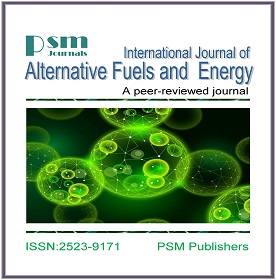Electricity Generation in Microbial Fuel Cells as a Function of Air: Cathode Configuration
Keywords:
Waste water, Air- cathode, Microbial Fuel Cell.Abstract
An inexpensive carbon black and Polytetrafluoroethylene (PTFE) air- cathode was developed as an alternative to an expensive metal catalyst and Nafion electrode for oxygen reduction in microbial fuel cell (MFC). The carbon black (Vulcan) was cold- pressed with PTFE binder to form the cathode around a steel mesh current collector. These constructions avoided the need for expensive metal catalyst and Nafion and produced a cathode with high current densities. Tests with three cathodes with different ratio of PTFE: Vulkan (5: 0.3; 0.2; 0.1g) produced a maximum current value as follows: 291 µA, 283 µA and 12 µA, respectively.







